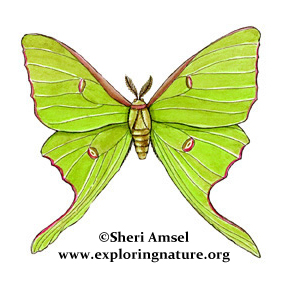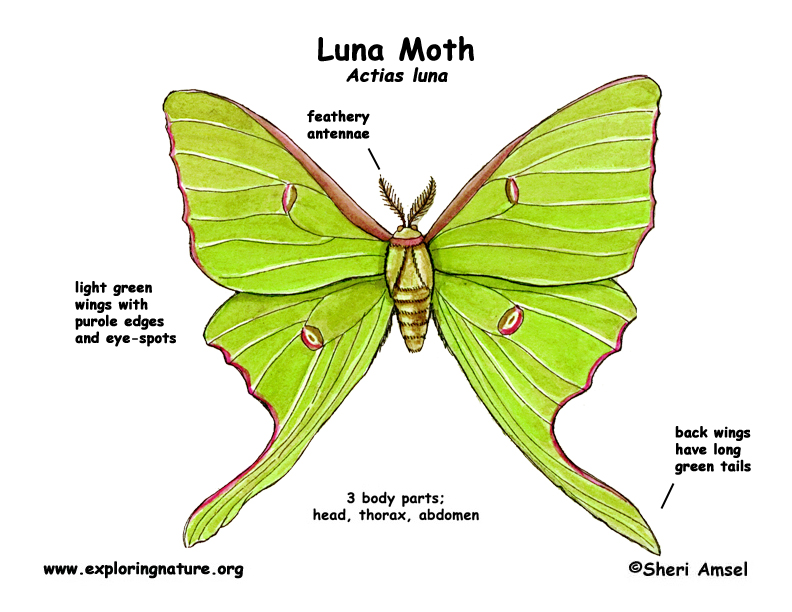

They are found in southern Canada, in the eastern U.S. all the way south to Florida and west to North Dakota and Texas.
They live in deciduous forests.
They are about 5 inches wide with a white body and light green wings with purple edges and eye-spots. The back wings have long green tails. They are strong fliers. They have feathery antennae.
They are active at night (nocturnal). Adults only live for about a week.
The caterpillar eats tree leaves like: walnut, hickory, maple, oak, willow, etc.
Females lay their brown eggs in small groups on underside of a leaf.
Kingdom: Animalia
Phylum: Arthropoda
Class: Insecta
Order: Lepidoptera
Family: Saturniidae
Genus: Actias
Species: A. luna
When you research information you must cite the reference. Citing for websites is different from citing from books, magazines and periodicals. The style of citing shown here is from the MLA Style Citations (Modern Language Association).
When citing a WEBSITE the general format is as follows.
Author Last Name, First Name(s). "Title: Subtitle of Part of Web Page, if appropriate." Title: Subtitle: Section of Page if appropriate. Sponsoring/Publishing Agency, If Given. Additional significant descriptive information. Date of Electronic Publication or other Date, such as Last Updated. Day Month Year of access < URL >.
Amsel, Sheri. "Moth (Luna)" Exploring Nature Educational Resource ©2005-2024. December 13, 2024
< http://www.exploringnature.org/db/view/Moth-Luna >

